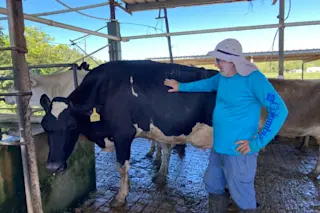During any given week, most articles on genetically modified organisms (GMOs) follow a simplistic and/or sensationalistic storyline. For example, here's last week's cover story in The Village Voice:
The Monsanto-Is-Evil theme is a media staple, as is the GMO-Foods-Are-Dangerous theme, of which magazines like
and
are piggybacking on. (I recently discussed the latter example). Too often urban myths are recycled credulously and coverage is botched altogether. That's why Amy Harmon's absorbing New York Timesstory on GMO oranges has been widely praised by many scientists and science journalists. Her long feature is a breath of fresh air on a complex, politicized subject that has been frequently distorted in the media by agenda-driven activists and their influential enablers (who should know better). Another much needed corrective to this sad state of affairs is the thoughtful (and ongoing) series of posts by Nathanael Johnson at Grist. This is uncharted (and probably ...













